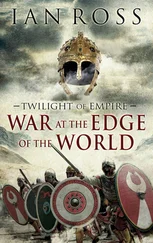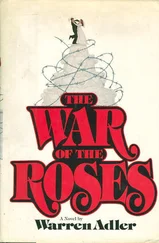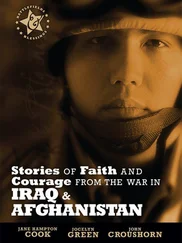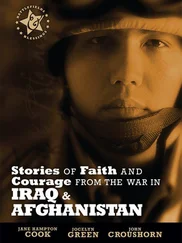How am I supposed to know? I am usually on the side that is under fire but I can only hear the explosions. Honestly, it is very rare that you can observe the moment when they fire and the target. How am I supposed to know who is shooting, if even the insurgents and soldiers don’t fully understand what’s happening?
How many insurgents are in the bunker? Including those standing watch (they are also lookouts when there is shooting), there are about fifty of us, claims the unit commander nicknamed Cimmerian. Usually a dozen or so stay in the bunker proper. They are all residents of Donbas. What did they do before the war? Among them there is a miner, a mechanic, and a blacksmith. Outside of their obligatory limited training they don’t have any military experience.
The commander claims that his unit is the only one here and that they cannot count on any reinforcement. Semen Semenchenko, whom I will meet a few days later, is the commander of the volunteer battalion Donbas. Fighting for the Ukrainian side, he will have a different opinion. According to him, there are a lot of artillery forces in the area, so the Ukrainian units can’t fight their way through to Marinka.
“If there had been only fifty people there, we would have dealt with them a long time ago,” he states.
Cimmerian is sitting next to me. At first, he doesn’t say much but finally he starts talking. He and his son, who is also in the unit, know everything about military service. His son got the nickname “Frenchman.” When the father and son talk to each other they use nicknames.
Cimmerian had been in the police, and he retired in March. That’s when the protests began, so he joined them. Then once again he reached for a weapon and signed up with the Donetsk People’s Republic. He had served twenty-five years in the Donetsk police force. He lives somewhere near the city. As often happens in Ukraine, he showed me photos on his phone—of his granddaughter on a horse and of his daughter. There is a picture of Frenchman in uniform; he must have been in the army. In a group photo he is posing with his entire unit. Another photo shows him as a member of the Donetsk mounted police. Finally, Cimmerian shows me photos from the Maidan.
“You were there?” I ask him.
“Yes, several times.”
He shows me more photos.
“How did they talk about it in Poland? Did they support the Maidan?” he asks me.
“Mostly, yes.”
“For what reason?”
I shrugged. “And you were there for what? For Yanukovych?”
“What does Yanukovych have to do with this? We maintained order.”
He starts by saying that everything was the demonstrators’ fault and that the police behaved in exemplary fashion. They only fought troublemakers.
“You were there on December 1?”
“I was there. Look.” He shows me one of the photos in which he is part of the police cordon holding metal shields.
On that day outside the Presidential Administration building a group of demonstrators connected with the rightist organization, the Brotherhood, brought a bulldozer and tried to storm the barricade in front. According to the supporters of the Maidan, it was a provocation. During quite a long time the police were attacked by demonstrators with stones, bottles, and metal chains. They responded with tear gas and stun grenades. Finally, the police reached for their clubs and dispersed the crowd, assaulting whoever was in their path. In these skirmishes about three hundred people were injured. Half of them were police.
“I was beaten by the police there, although they knew I was a journalist,” I tell Cimmerian.
There is a pause. It is the first time he doesn’t respond right away.
“But I wasn’t beating you,” he claims meekly.
I burst into laughter, and we never talk about the Maidan again.
Cimmerian insists that we follow them to the buildings to watch them picking up the residents’ bodies. It is very important to him that it is documented. I try to convince them that we have to leave because we can no longer keep the cabbie who was also in the bunker. “We will give you a ride,” says Cimmerian. We settle accounts with the taxi driver and he quits the bunker. We stay put, waiting for the shooting to fade.
I didn’t check the time carefully, but I think we spent about four hours in the bunker. Finally, Cimmerian organizes the expedition. He takes four volunteers and two local residents. We are going outside. “Single file, five meters apart!” says the commander. We are taking the same route on which I was running away earlier. Cimmerian orders us to walk under the trees. Where there is a clearing, we are to dash to the nearest trees. It will make it more difficult to aim at us.
When we walk by one of the houses, we smell the terrible stench of a decomposing body. They look over the fence but see nothing. “It must be an animal,” asserts one of the locals who clearly is not keen on carrying corpses. So we keep walking.
We have returned to the building with the headless official wrapped in a lace curtain. They are about to take him out when we hear some commotion. We go outside. They have caught two guys who are twenty-something. One of the insurgents has brought a bag full of cosmetics.
“They wanted to steal it. They are marauders,” he says.
The militants tell them to put their hands over their heads and kneel down on the pile of glass that fell from the shattered windows.
“You know what we do with people like you?” asks Cimmerian. The boys have tears in their eyes.
“We are not marauders. We didn’t want to take anything. We came to guard this building.” One of them can barely speak. They are told to lower their heads while the insurgents recharge their weapons.
“It is necessary. They are marauders,” says one of the locals quietly, justifying the insurgents’ behavior.
“OK. We have a different task for you,” says Cimmerian, breaking the dreadful silence. “You will take the corpse outside.”
Their job is to remove the body from the building and place it somewhere. They don’t have gloves. They struggle, but in the end they manage to move it out, carrying it on a lace curtain. They keep smelling their hands, making sure that they don’t smell like death.
Then the boys are walked further. Once again we smell the stink of decomposing corpses near the garages but no one can determine where it’s coming from. After a search we return to the bunker. On the way Cimmerian keeps talking to the detainees.
“They are not marauders,” he asserts when we get back. And he sets them free.
As promised, the insurgents gave us a ride to the city center.
The Battle of Donetsk
Marinka and the Petrovska suburbs are quite far from the center of Donetsk, so the sounds of the fighting were barely audible in the city. On the other hand, north of Donetsk everyone got used to the shooting around the airport.
“Somebody is shooting there every day. For us it’s a daily routine,” a women living near the train station tells me. No one remembers any more that on May 26, the day after the presidential election, a huge battle took place there. This area was controlled by the Ukrainian forces the entire time. If it had been captured by the separatists, the remaining Ukrainian units would have been pushed out from the city. The Donetsk People’s Republic could then form its own air force and Russia would probably send them some planes.
But the combat zone in Donetsk started to expand, and the residents’ initial indifference was slowly melting. On July 21 the shells coming from the north were falling near the train station. The separatists’ artillery located in the city center was firing, too. The shelling began in the early morning.
“Press, pull over! Tanks are coming,” says a separatist blocking the road to the train station, when I and other journalists arrive. We are near the center. People are walking by the apartment buildings in a large group.
Читать дальше








![Theresa Cheung - The Dream Dictionary from A to Z [Revised edition] - The Ultimate A–Z to Interpret the Secrets of Your Dreams](/books/692092/theresa-cheung-the-dream-dictionary-from-a-to-z-r-thumb.webp)



